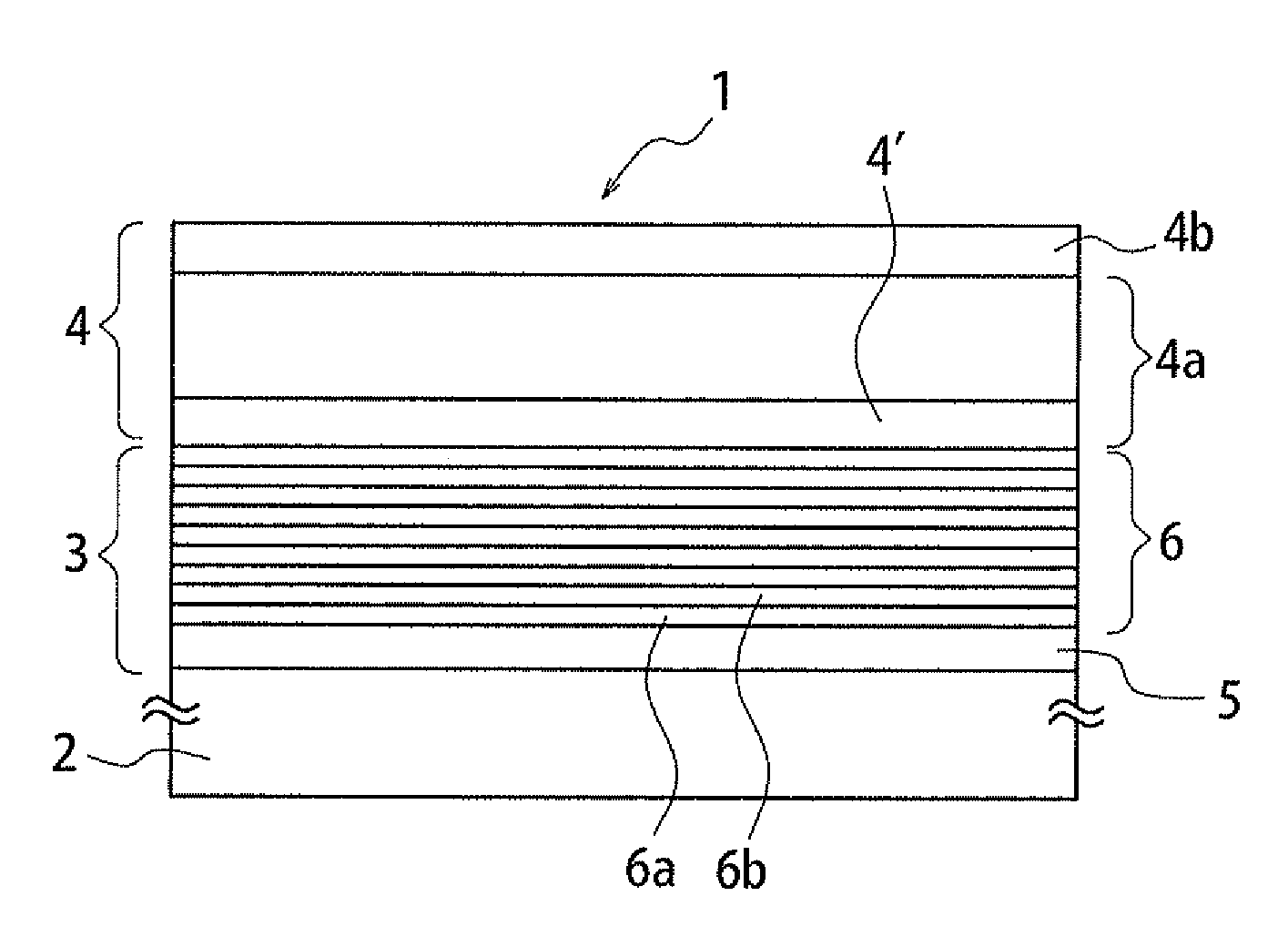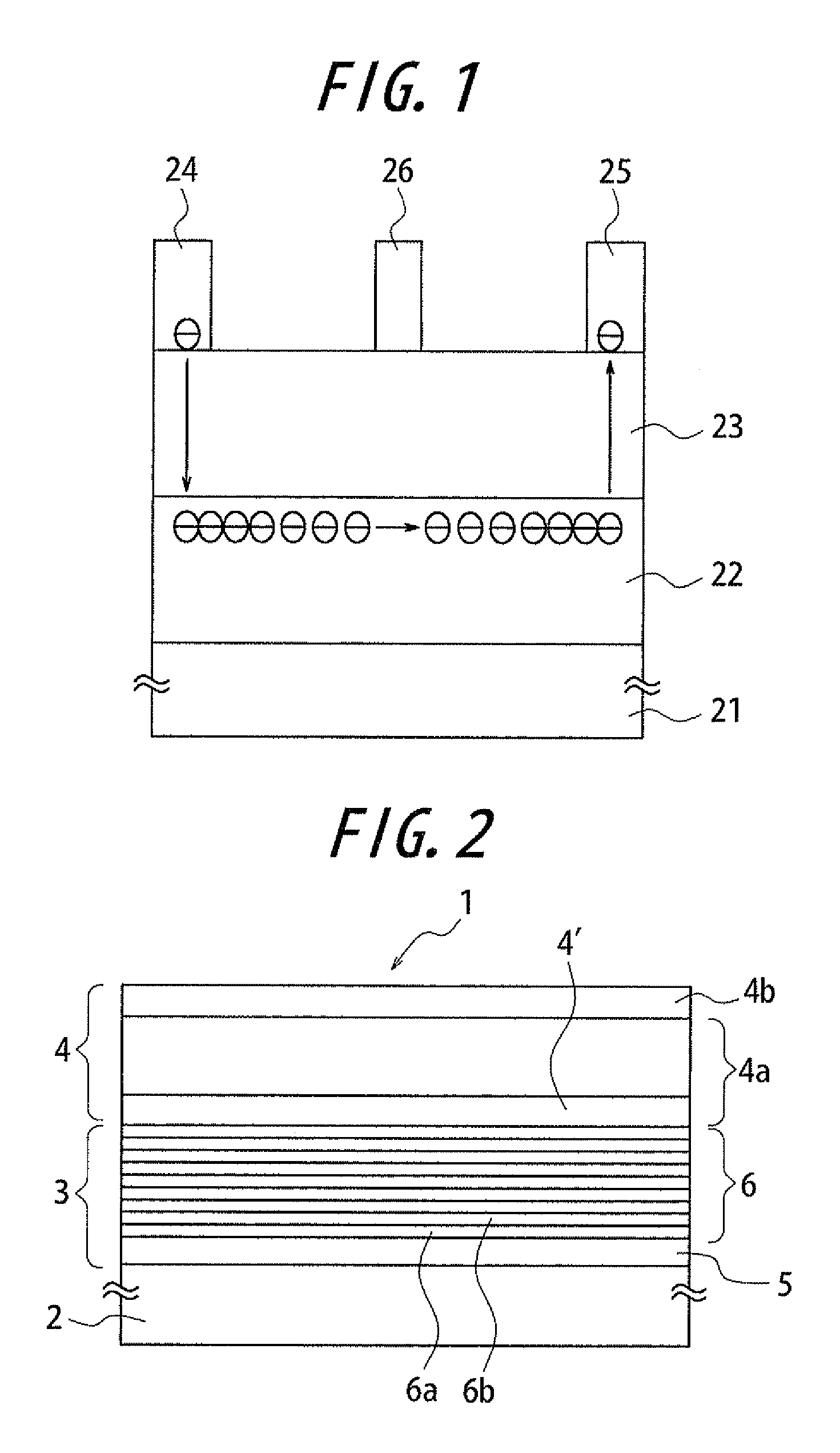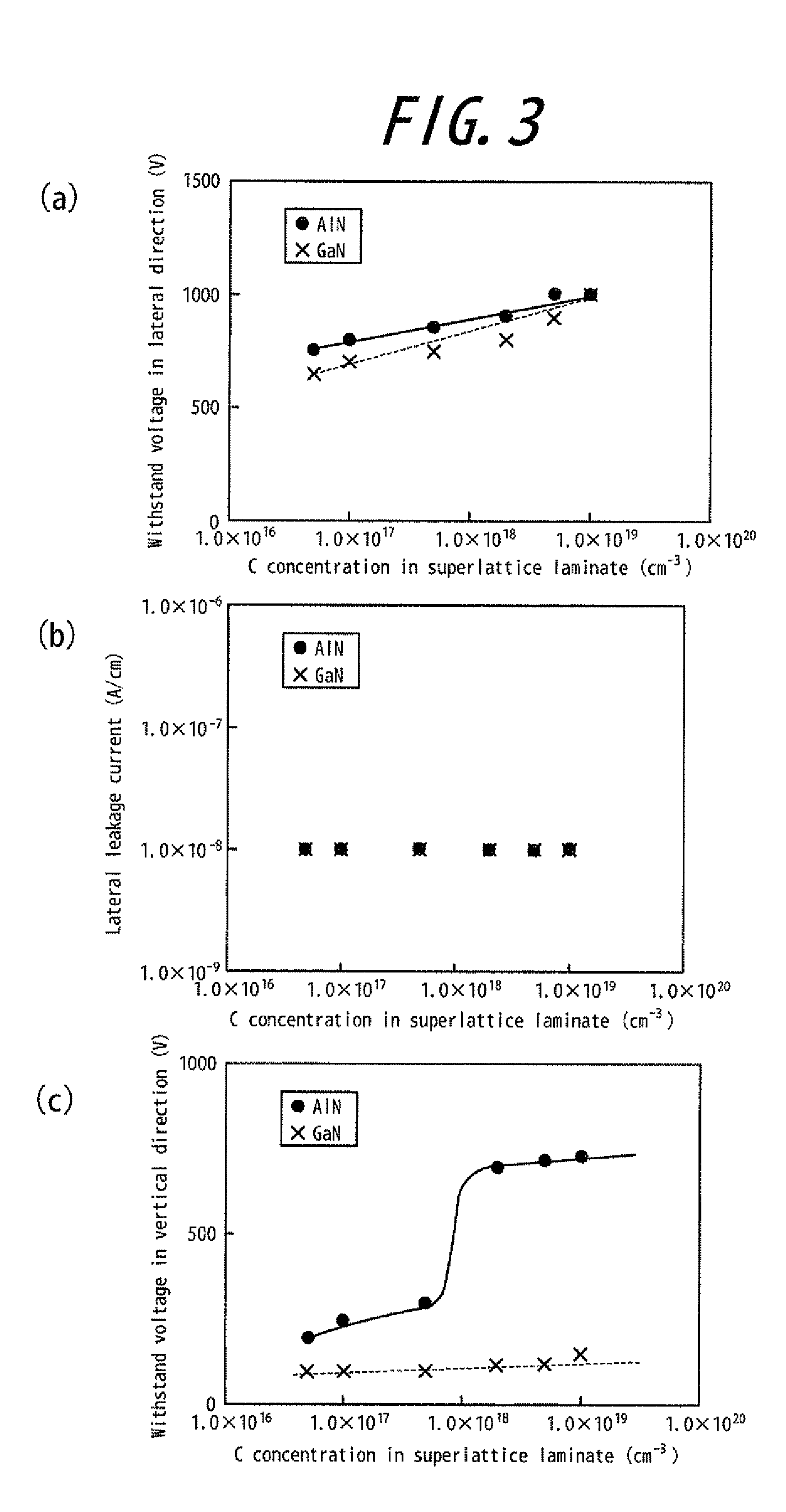Epitaxial substrate for electronic device and method of producing the same
a technology of electronic devices and substrates, applied in the direction of crystal growth process, polycrystalline material growth, chemically reactive gases, etc., can solve the problems of depletion layer not expanding efficiently, power consumption increase, loss, etc., to enhance withstand voltage, and reduce lateral leakage current
- Summary
- Abstract
- Description
- Claims
- Application Information
AI Technical Summary
Benefits of technology
Problems solved by technology
Method used
Image
Examples
example 1
[0053]An initially grown layer (AlN material with 100 nm thickness) and a superlattice laminate (totally 85 layers of AlN with 4 nm film thickness and Al0.15 Ga0.85N with 25 nm film thickness) were grown on each of (111) faces of 4 inch Si single crystal substrates having 600 μm thickness and specific resistance values of 1×10−1 Ω·cm, 1×10 Ω·cm, 2×103 Ω·cm and 1×104 Ω·cm, respectively, to form buffer layers, followed by epitaxial growth of a channel layer (GaN material with 1.5 μm thickness) and an electron supply layer (Al0.25 Ga0.75N material with 20 nm thickness) on each of the buffer layers to form a main laminated body having a HEMT structure, whereby Samples 1 to 4 were obtained. Carbon concentrations of the superlattice laminates of these Samples were varied. Carbon concentration of a portion, on the buffer side, of each of the main laminated bodies of the Samples was within the range of 1.5 to 2.0×1018 / cm3. Carbon concentration of a portion, on the electron supply layer side...
example 2
[0055]Sample 5 was prepared by substantially the same method as Sample 2 of Example 1, except that the initially grown layer was formed by a GaN material (thickness: 20 nm) which grew at 700° C. and conditions of growth temperatures and growth pressures of the respective layers were set as shown in Table 2.
[0056]
TABLE 2GrowthGrowthLayerpressure (kPa)temperature (C. °)Initially grown layer10700Superlattice laminateP1 (1-120)1025Channel layer on buffer side101025Channel layer on electron 1001075supply layer sideElectron supply layer101025
[0057]FIG. 3(a), FIG. 3(b) and FIG. 3(c) show measurement results of withstand voltage in lateral direction, lateral leakage current, and withstand voltage in vertical direction of Sample 2 and Sample 5, respectively. The measurement was carried out as follows.
[0058]Withstand voltage in vertical direction is measured by: forming on a surface of a substrate ohmic electrodes each having a Ti / Al laminate structure (80 μmφ); etching the outer side of each...
example 3
[0062]Samples 6 to 9 were prepared by substantially the same method as Samples 1 to 4 of Example 1, except that growth pressure for the superlattice laminate was set 10 kPa, the carbon concentration of a portion on the buffer side of the main laminated body was varied, and conditions of growth temperatures and growth pressures of the respective layers were set as shown in Table 3. The carbon concentration of the superlattice laminate was adjusted by changing growth pressure P2 shown in Table 3, for example, by decreasing film-forming pressure to increase carbon concentration therein. The carbon concentration of each of the superlattice bodies of Samples 6-9 was within the range of 1.5 to 2.5×1018 / cm3.
[0063]
TABLE 3GrowthGrowthLayerpressure (kPa)temperature (C. °)Initially grown layer10700Superlattice laminate101025Channel layer on buffer sideP2 (1-120)1025Channel layer on electron 1001075supply layer sideElectron supply layer101025
[0064]FIG. 4(a), FIG. 4(b) and FIG. 4(c) show measure...
PUM
 Login to View More
Login to View More Abstract
Description
Claims
Application Information
 Login to View More
Login to View More - R&D
- Intellectual Property
- Life Sciences
- Materials
- Tech Scout
- Unparalleled Data Quality
- Higher Quality Content
- 60% Fewer Hallucinations
Browse by: Latest US Patents, China's latest patents, Technical Efficacy Thesaurus, Application Domain, Technology Topic, Popular Technical Reports.
© 2025 PatSnap. All rights reserved.Legal|Privacy policy|Modern Slavery Act Transparency Statement|Sitemap|About US| Contact US: help@patsnap.com



